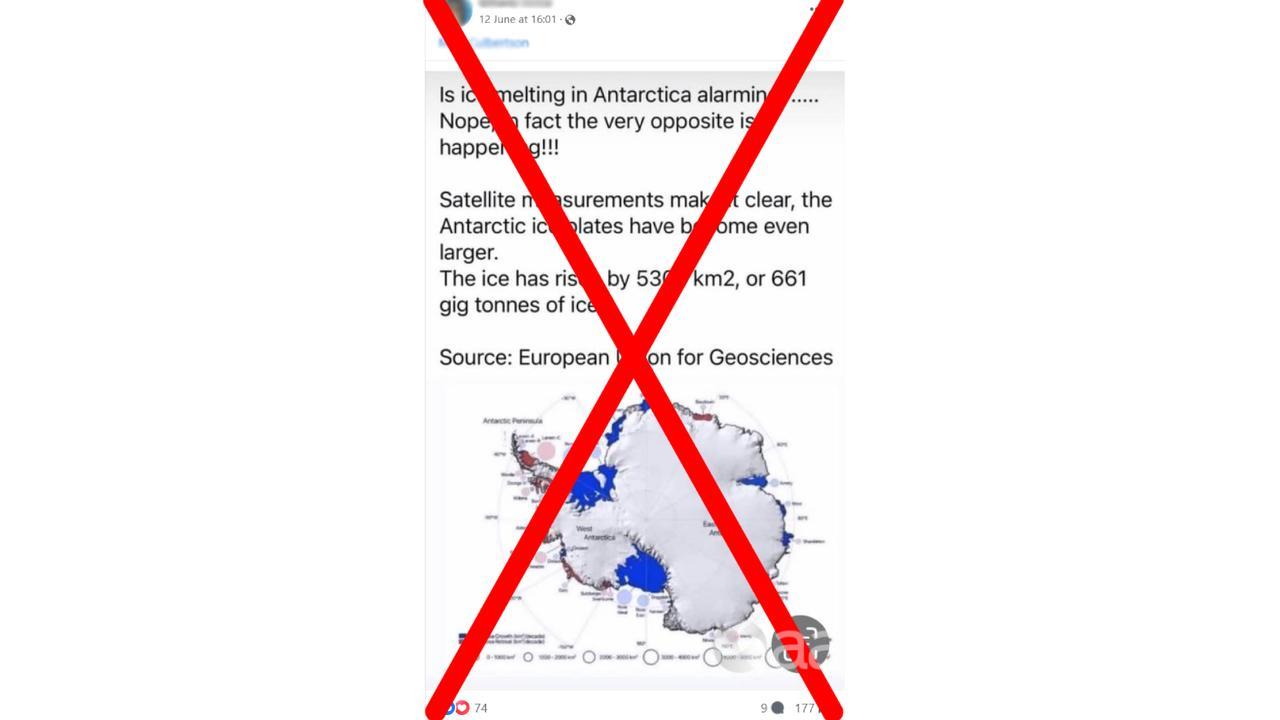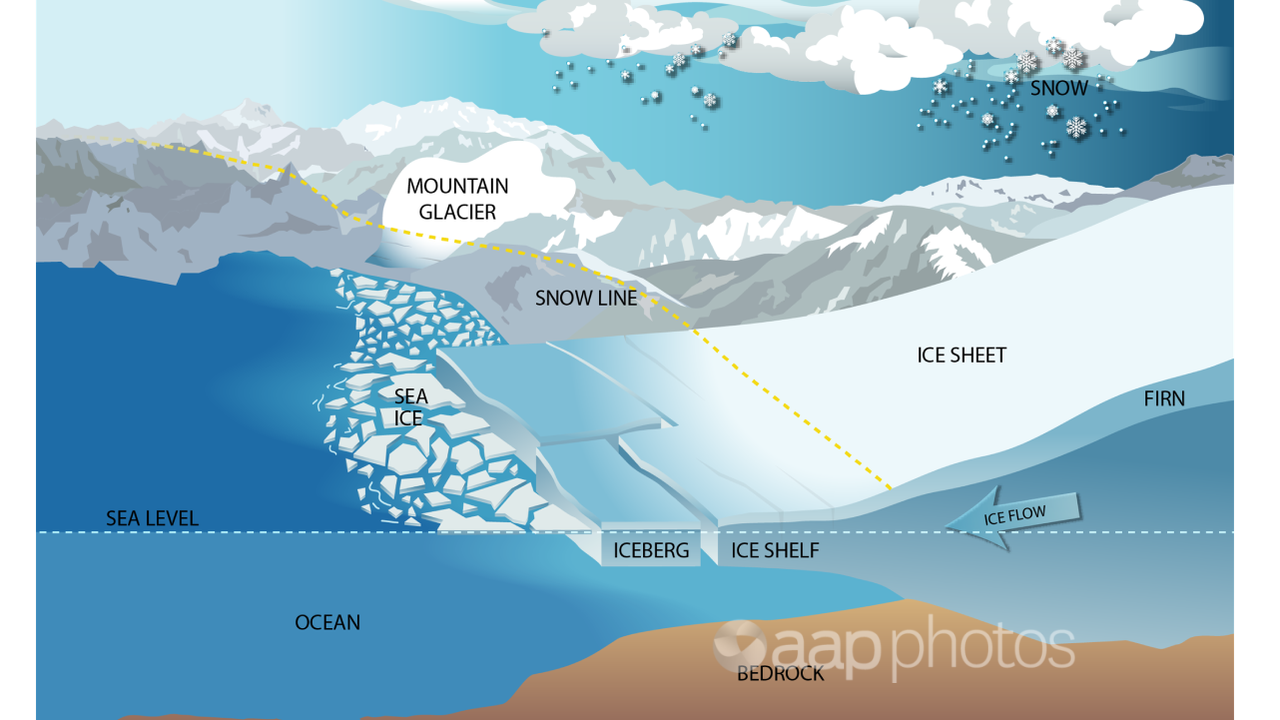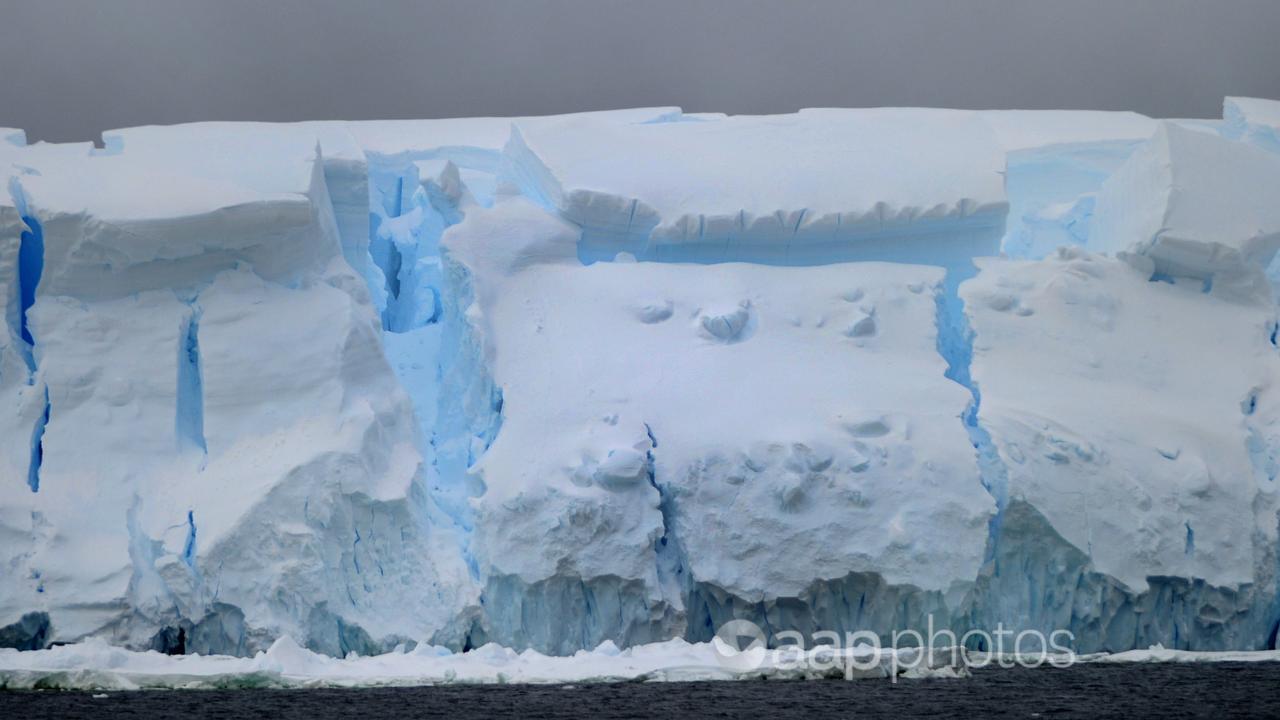AAP FACTCHECK – Social media climate change sceptics are sharing an image of Antarctica claiming it proves Antarctic ice is growing, not melting.
This is false. Antarctica is losing ice mass and contributing to sea level rise. The image is from a study that only presented measurements of ice shelf area change over a 10-year period, not ice mass change in the overall Antarctic system.
The claim has been made in several posts across Facebook and X (formerly Twitter).

“Is ice melting in Antarctica alarming?…..” one post reads. “Nope, in fact the very opposite is happening!!!
“Satellite measurements make it clear, the Antarctic ice plates have become even larger.”
The posts are accompanied by an annotated map of Antarctica, with some areas highlighted in red where the ice shelf has retreated, and much larger areas highlighted in blue where the ice shelf has grown.
The map is from a 2023 study that observed changes in the Antarctic ice shelf area from 2009 to 2019.
Ice shelves are the floating extension of the Antarctic ice sheet as it pushes out over the ocean. The shelves float on the ocean.
The ice sheet, which covers around ten times the surface area of the shelves, is formed on land.
Therefore, the melting of the ice sheet directly adds water to the world’s oceans.
One of the co-authors of the study, Professor Anna E Hogg, told AAP FactCheck neither the study nor the graphic proves Antarctica is losing mass.
“We make no such claims in the paper,” Prof Hogg says. “Our paper only presents measurements of ice shelf area change.
“Antarctic ice shelves are only one part of the overall Antarctic system.”

While the study did observe an increase overall in Antarctic ice shelf area, experts told AAP FactCheck this is not surprising, nor does it indicate overall Antarctic ice loss or growth.
Professor of polar geodesy Matt King and glaciologist Sue Cook, both of the University of Tasmania, say the Antarctic ice shelf area is naturally subject to seasonal fluctuations.
“Ice shelf area is highly variable in time,” Prof King says. “The area of an ice shelf can be impacted by climate warming but ice shelves also naturally vary in size due to the ‘calving’ (creation) of icebergs.”
“These ice shelves are constantly naturally advancing,” Dr Cook says, “as ice flows off the Antarctic continent and out into the ocean.
“Periodically, the front of an ice shelf will also retreat as icebergs crack off the front.”

Dr Cook explains it’s therefore not unusual to see a net increase in Antarctic ice shelf area in any given 10-year period.
“The study this post was referring to looked at data from a 10-year period [2009-2019], but for Antarctica this is actually a very short period of time – it can often take many decades for a large iceberg to form, and in the intervening time the front of the ice shelf will constantly be advancing.”
Dr Cook says a different study looked at the Antarctic ice shelf area over a longer period and found there was a net decrease.
Prof Hogg also emphasises that the spatial pattern of ice shelf area change, not simply a net increase or decrease in area, is important.
She told climate-focused website Carbon Brief that a significant decrease in ice shelf area in west Antarctica, for example, is particularly important because “this ice shelf area actively ‘buttresses’ the flow of ice from the ice sheet behind it, which through ice dynamic processes is one of the reasons why west Antarctica is contributing significantly to present-day sea level rise”.
Experts have previously debunked a similar claim, telling AAP FactCheck there were no grounds to assert that the Antarctic ice sheet as a whole is growing.
NASA’s Global Climate Change site says Antarctica is “losing ice mass at an average rate of about 150 billion tons per year”.
The US-based National Oceanic and Atmospheric Administration says Antarctica has become warmer and lost huge amounts of ice as a result.
A 2018 ice sheet study found that Antarctica lost billions of tonnes of ice between 1992 and 2017, while a similar 2023 study found that between 1992 and 2020 the Antarctic ice sheet lost about 92 gigatonnes per year.
The Verdict
False – The claim is inaccurate.
AAP FactCheck is an accredited member of the International Fact-Checking Network. To keep up with our latest fact checks, follow us on Facebook, Twitter and Instagram.
All information, text and images included on the AAP Websites is for personal use only and may not be re-written, copied, re-sold or re-distributed, framed, linked, shared onto social media or otherwise used whether for compensation of any kind or not, unless you have the prior written permission of AAP. For more information, please refer to our standard terms and conditions.


















